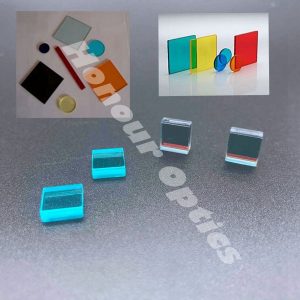

Visible light, which travels at a dizzying 186,282 miles per second through space, is just one part of light's broad spectrum, which encompasses all electromagnetic radiation. We can detect visible light because of cone-shaped cells in our eyes that are sensitive to the wavelengths of some forms of light. Other forms of light are invisible to humans because their wavelengths are either too small or too large to be detected by our eyes.
The Hidden Nature of White Light
What we call white light is not a single color at all but the full spectrum of visible light all combined. For most of human history, the nature of white light was completely unknown. It wasn't until the 1660s that Sir Isaac Newton discovered the truth behind white light using prisms – triangular bars of glass – to break the light into all of its different colors and then reassemble them again.
When white light goes through a prism, its component colors are separated, revealing red, orange, yellow, green, blue, indigo and violet. This is the same effect you see when light passes through water droplets, creating a rainbow in the sky. When those separated colors shine through a second prism, they are brought back together to form a single beam of white light.
The Light Spectrum
White light and all the colors of the rainbow represent a small part of the electromagnetic spectrum, but they are the only forms of light we can see because of their wavelengths. Humans can only detect wavelengths between 380 and 700 nanometers. Violet has the shortest wavelength we can see, while red has the largest.
While we don't normally call other forms of electromagnetic radiation light, there is little difference between them. Infrared light is just outside our vision with a wavelength bigger than red light. Only with instruments like night-vision goggles can we detect the infrared light generated by our skin and other heat-emitting objects. On the other side of the visible spectrum, smaller than violet light waves are ultraviolet light, X-rays and gamma rays.
Light Color and Energy
Light color is usually determined by the energy being produced by the source that emits it. The hotter an object is, the more energy it radiates, resulting in light with shorter wavelengths. Cooler objects create light with longer wavelengths. For example, if you fire up a blowtorch, you will find its flame is red at first, but as you turn it up, the color becomes blue.
Similarly, stars emit different colors of light because of their temperatures. The surface of the sun has a temperature around 5,500 degrees Celsius, causing it to emit a yellowish light. A star with a cooler temperature of 3,000 C, like Betelgeuse, emits red light. Hotter stars like Rigel, with a surface temperature of 12,000 C, emit blue light.
The Dual Nature of Light
Experiments with light in the early 20th century revealed that light had two natures. Most experiments showed that light behaved as a wave. For example, when you shine light through a very narrow slit, it expands as a wave does. In another experiment, however, called the photoelectric effect, when you shine violet light on sodium metal, the metal ejects electrons, suggesting that light is made of particles called photons.
In fact, light behaves as both a particle and a wave and appears to change its nature based on which experiment you conduct. In the now-famous two-slit experiment, when light encounters two slits in a single barrier, it behaves as a particle when you are looking for particles but also behaves as a wave if you are looking for waves.